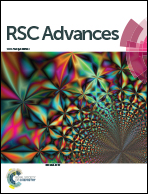Mechanism of polyol assisted ccp to hcp crystal phase conversion of nickel particles
Abstract
The effect of different chain length glycols on the conversion of ferromagnetic ccp nickel nanoparticles to antiferromagnetic hcp structure was investigated. To be an effective crystal phase tuner, the glycol molecule must have both an ether fragment and a linear chain structure. The phase conversion was studied at reaction times up to 100 hours and temperatures between 200 and 275 °C. Under selected conditions nickel particles of pure or mixed crystal structure could be generated.


 Please wait while we load your content...
Please wait while we load your content...